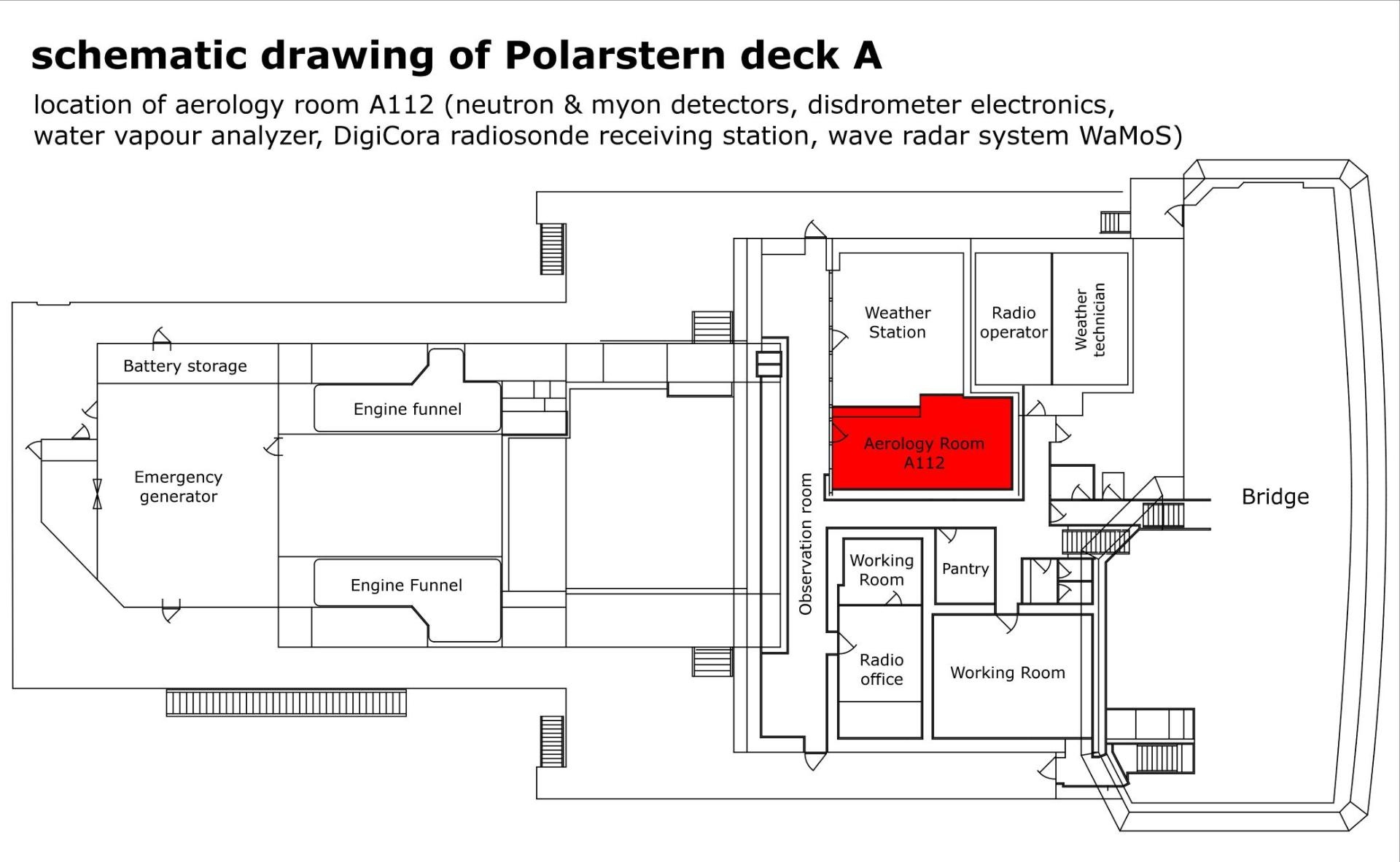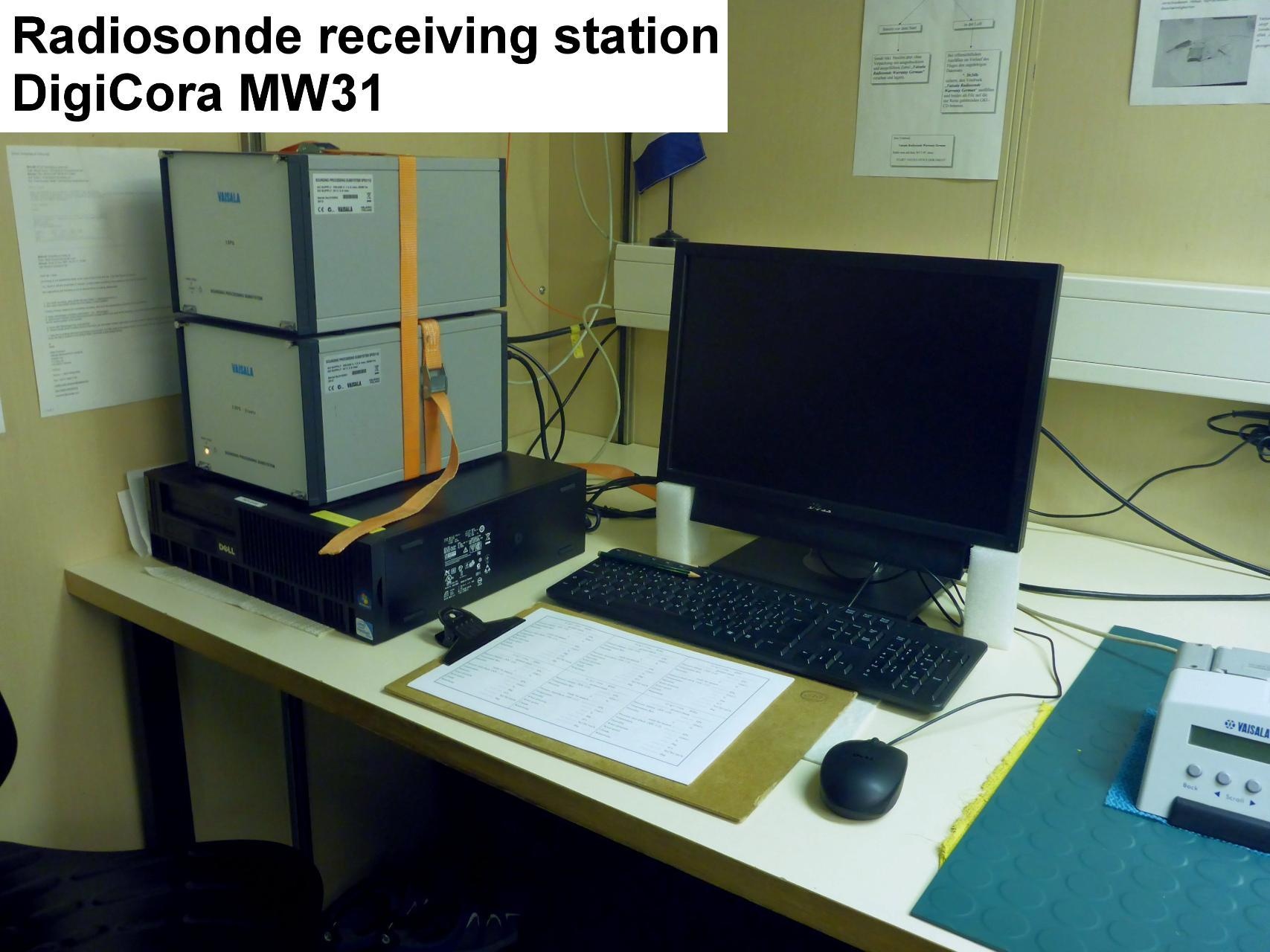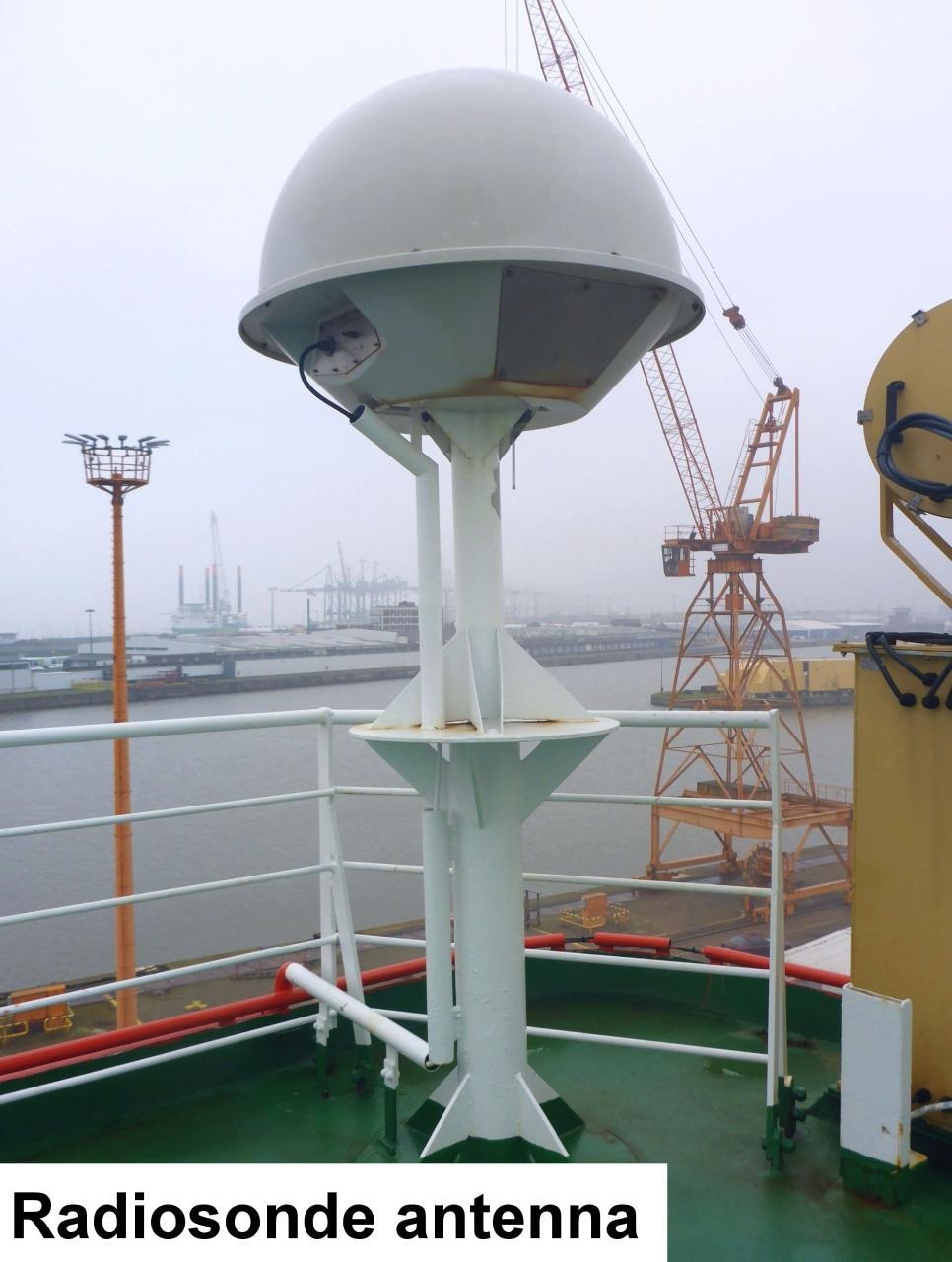


The system is operated by staff from the German weather service (DWD). Scientific co-use is possible according to prior agreement with AWI Logistics and Principal Investigator of the Polarstern Meteorological Observatory (Holger Schmithüsen). Helium is calculated to supply one 600 gramm balloon per day. If additional radio sonde ascents are planned, the user has to organize the additional sondes, balloons and helium. |
The radiosonde sounding system gathers meteorological data (pressure, temperature, humidity, wind, position) from a mandatory radiosonde and data from additional sensors like ozonesonde (ozone), cryogenic frostpoint hygrometer (CFH; stratospheric water vapour) and COBALD (aerosol) as well as from ground based sensors (standard humidity chamber, and others) |
|
|
The system consists of a sounding PC, electronic unit "DigiCora", ground check set, GPS antenna, telemtry antenna, Helium filling unit. |
|
|
|
Time synchronising is regulated via onboard NTP server. Geographical ship's position via unit's GPS receiver. |
Mass data: The data acquisition software creates rawdata on the local drive of the sounding computer and in the mass storage. |
|| root directory | data01 || || directory name | CruiseNo \\ e.g. \\ ANT25_3 || || file name | DBLK_YYYYMMDD_hhmmss.mwx || || Data volume (MB per day) ca | 16 or 32 || || Number of files per day ca | 1 or 2 || |
After the cruise, the operator transfers the measurement data along with required meta data to AWI. After consultation with the data scientist and AWI Logistics they are uploaded to the PANGAEA repository. Then, the data (including meta data) can be extracted from https://www.pangaea.de/ (for authorized users only). |
|| File format(s) | *.txt || || Calibration certificates | NO || |